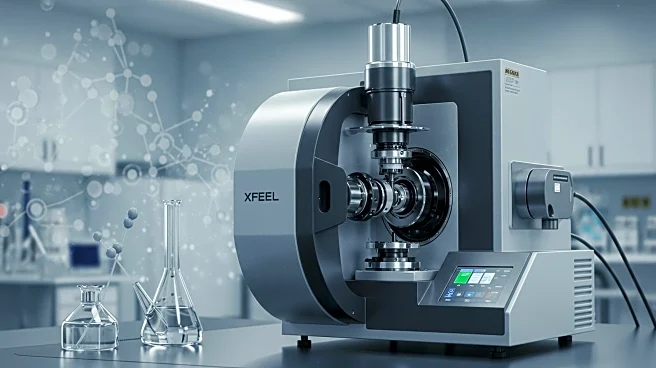What's Happening?
Recent research has focused on improving the resolution limits of single-particle imaging (SPI) using X-ray free-electron lasers (XFELs). The study utilized the Escherichia coli chaperonin GroEL to examine the effects of experimental background noise on resolution. By simulating diffraction patterns of GroEL particles at various energy levels (1.2 keV, 2.5 keV, and 6.0 keV), researchers explored how background noise impacts the quality of protein structure imaging. The study found that reducing background noise and increasing the number of diffraction patterns significantly enhances resolution. Techniques such as Poisson sampling and the Expand-Maximize-Compress (EMC) algorithm were employed to assemble 3D volumes from 2D patterns, with background correction improving the accuracy of the reconstructions.
Why It's Important?
The advancements in SPI using XFELs have significant implications for the field of structural biology. By achieving higher resolution imaging of proteins, researchers can better understand protein functions and interactions, which is crucial for drug development and disease treatment. The ability to map protein structures without crystallization or vitrification opens new avenues for studying complex biological systems. This research could lead to more precise targeting of proteins in medical treatments, potentially improving therapeutic outcomes. Additionally, the reduction in background noise and increased dataset sizes could streamline the imaging process, making it more efficient and accessible for scientific research.
What's Next?
Future experiments are expected to benefit from improved sample delivery techniques, which will further reduce background noise. Researchers may focus on increasing the number of diffraction patterns to enhance resolution even more. The study suggests that combining noise reduction with larger datasets will yield the best results, potentially leading to breakthroughs in protein imaging. As technology advances, the experimental geometry limitations observed at certain energy levels may be addressed, allowing for even higher resolution imaging. These developments could pave the way for more detailed studies of protein structures and their roles in various biological processes.
Beyond the Headlines
The study highlights the importance of balancing noise reduction and dataset size to achieve optimal resolution in SPI. This balance is crucial for advancing the field and overcoming current limitations. The research also underscores the potential for XFELs to revolutionize protein imaging, offering insights into previously inaccessible aspects of molecular biology. As the technology evolves, ethical considerations regarding data sharing and accessibility may arise, particularly as high-resolution imaging becomes more widespread.















